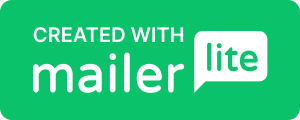Punctuation for Dummies: A Humorous Guide

Punctuation is not rocket science—if it were, perhaps we’d find it easier to master! Instead, let’s take an artistic approach to punctuation and describe each mark with a bit of humor. This guide is perfect for new writers and general readers who want to learn punctuation in a fun and memorable way.
Period (.)
The Period is like a person who freezes in place after saying something. He has finished his argument and won’t move a step.
Example: "I went to the store."
Comma (,)
The Comma is a person who is saying something and wants to take a breath. So, he does a somersault and continues with his idea.
Example: "I bought apples, oranges, and bananas."
Question Mark (?)
The Question Mark is a person who follows a wavy path and then drops to a stop. They’re curious and inquisitive, always seeking answers.
Example: "Are you coming to the party?"
Exclamation Mark (!)
The Exclamation Mark is the most dramatic. It’s as if a person fell from a height, leaving only a dot in their place.
Example: "Watch out!"
Colon (:)
The Colon is like two razor blades that divide the thought before them into two or more parts. It’s sharp and precise.
Example: "She had one goal: to win."
Semicolon (;)
The Semicolon is as argumentative as the Period. He won’t change his argument but can do a somersault and add more to the argument to make it stronger or clear up the logic.
Example: "I wanted to go for a run; it was raining too hard."
Ellipsis (...)
The Ellipsis represents a person who tried to say something strong but forgot and stopped. They tried to proceed but stopped again, and finally gave up on the topic.
Example: "Well, I thought I might..."
Dash (—)
The Dash is a bridge that connects thoughts or isolates a separate thought on its own island.
Example: "He decided to go—despite the storm."
Apostrophe (')
The Apostrophe is a possessive little thing, always wanting to own something or show that letters are missing.
Example: "It’s a beautiful day."
Quotation Marks (" ")
Quotation Marks are the storytellers, always quoting what someone else has said.
Example: "She said, 'Hello.'"
Parentheses (())
Parentheses are the whisperers, adding extra information or an afterthought.
Example: "We went to Paris (my favorite city) last summer."
Brackets ([])
Brackets are the editors, adding explanations or corrections within a quote.
Example: "She [the teacher] was late."
Hyphen (-)
The Hyphen is the matchmaker, joining words together in harmony.
Example: "It’s a well-known fact."
Slash (/)
The Slash is the indecisive one, offering alternatives or options.
Example: "You can bring your friend/spouse."
Ampersand (&)
The Ampersand is the shorthand artist, bringing together two items in a swift, stylish way.
Example: "Salt & pepper."
Punctuation can be daunting, but when we think of it in these playful, imaginative ways, it becomes much more approachable. Remember, writing is an art, and punctuation is your toolkit to craft clear and compelling narratives. Happy writing!
